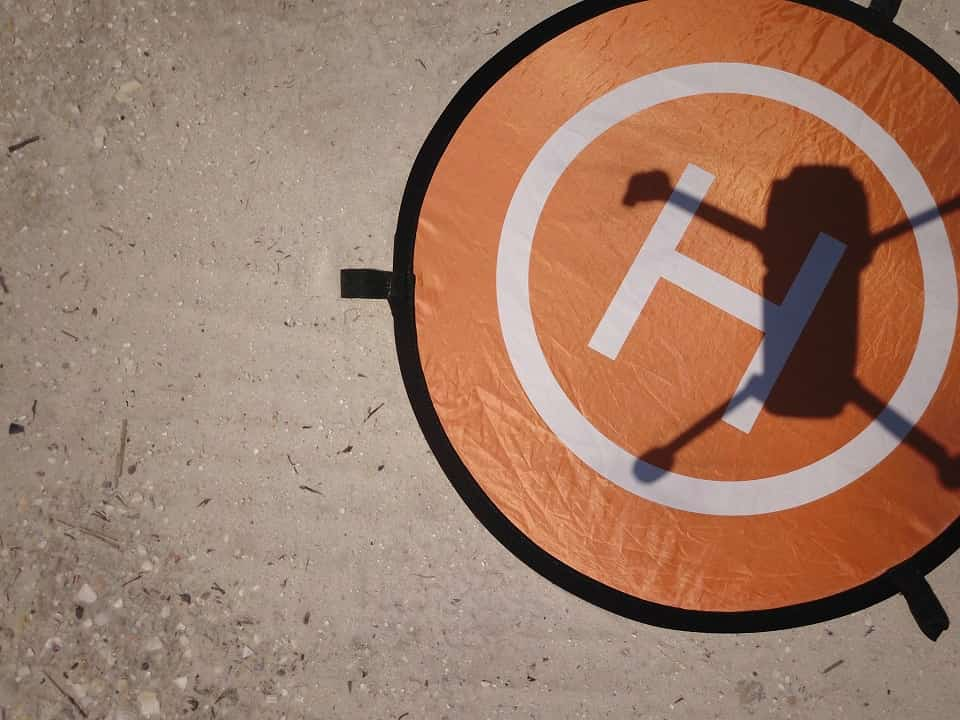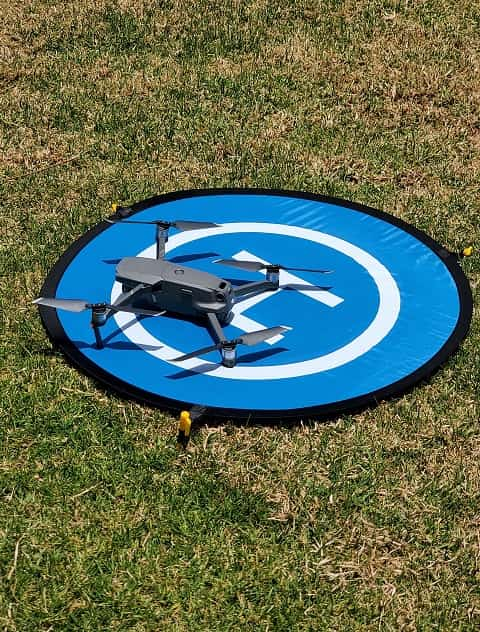The advantages of landing pads for drones
A drone landing pad offers many advantages. What these are and what you should look for as a drone pilot when buying a landing mat for drones, you will learn in this article.
Why do I need a landing pad for my drone?
Many drone owners have certainly asked themselves the question of whether they need a takeoff and landing pad for their drone. At first glance, some of the advantages may not be so obvious. That’s why we took a closer look at the topic and present the positive features of landing platforms for drones in more detail below.
First of all, a portable landing pad helps protect your drone. Especially during takeoffs and landings on uneven surfaces such as fields or meadows, there is a risk that small stones, dirt or blades of grass come into contact with the rotors and motors of the drone and damage them.

Wet or particularly dry surfaces can also be dangerous for the drone, as moisture or dust can penetrate the motors. In addition to the motors and propellers, the camera and gimbal in particular are also very sensitive to external influences, so these also benefit from a launch and landing pad.
In addition to protecting the camera drone, a drone landing pad also provides better visibility of the landing point from the air. On the one hand, this applies to you as the pilot, but on the other hand, it also applies to the drone itself. Many current quadcopters have sensors for a safe landing. In contrast to a natural surface, a landing pad for drones usually offers a better contrast, making it easier for the sensors to locate the landing spot and land safely.
Last but not least, a landing mat also has an effect on bystanders and makes a professional impression, especially when the drone is used commercially.
What should I look for when buying the drone landing pad?
First of all, you should think about the necessary size of the landing site. A DJI Mini 2 naturally needs less space than a Yuneec Typhoon H Plus hexacopter. The common sizes of drone landing pads range from about 20 inches (50 cm) to a little over 40 inches (1 meter) in diameter. If in doubt, we recommend that you rather choose a slightly larger landing mat.
In terms of shape, there are both round and square versions available for purchase. All of the pads we reviewed can be folded for transport. With the round landing pads, this seems a bit more complicated at first, but after one or two tries, it’s no longer a problem.
Tip: To fold round landing pads, simply grasp the outer sides with both hands and twist them against each other (fold an “8”). The landing pad can then be stored to save space.

In any case, make sure that the landing pad is waterproof, so that the top remains dry even after a long time on a damp field or even on snow. The material of most pads is either nylon or polyester, so they are both strong and lightweight. Many drone landing pads are two-tone and often come in orange and blue color combinations.
Almost all drone landing pads also come with hooks or pegs, like those used for camping, for attaching them to the ground.
Some users also use a lead tape to additionally weigh down the pad. For this purpose, the seam on the hem of many pads can be carefully torn open at one point and the tape inserted. However, this “optimization measure” is by far not necessary, since fastening with the supplied hooks is actually always sufficient.